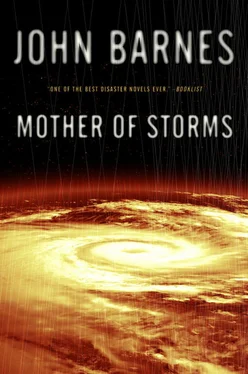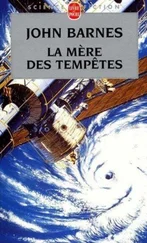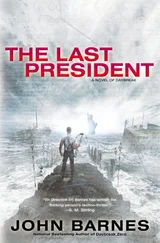So by suggesting the Lectrajeep, he’s looking for a fight, maybe, if he admits the truth to himself, because if they fight and then fuck to make up, it will be what he really wanted all along, and if they just fight, it will make him that much crazier for the next time. He’s beginning to wonder, a little, just how much crazier he can get.
He’s stunned numb when she takes his hand and says, “Let’s give it a try. I’ve been thinking maybe I don’t bend enough or try to see anyone else’s point of view.”
Jesse’s heart is thumping to be let out of his chest. “Great,” he says. “It’s about an hour’s drive out to my favorite spot if we go at a reasonably responsible speed. I’ll call my brother on the way and see if he knows anything about environmental effects yet.”
She kisses him then, right out where anyone might see it happening. He’s crazier. Definitely crazier.
In the seabed off the North Slope, things have been happening. There was a lot of kinetic energy in the warheads to begin with, and because Scuttlebytes got it right for once, there was also a plume of antiprotons spraying in ahead of them, and that added some energy as well.
All that was nothing compared to the warheads themselves. When an antineutron collides with a beryllium nucleus, it annihilates one neutron, and the mutual annihilation releases around nine times the energy of a fissioning uranium atom. It also converts that nucleus to two alpha particles about as close together as you’ll ever see them. Having the same charge, they repel each other and take off in opposite directions, adding a percentage point or so to the total energy. The alpha particles, highly charged, readily “hand over” their energy to the matter they pass through, as heat, as electromagnetic radiation, and as mechanical motion caused by the heat and radiation.
It is the destiny of all energy, eventually, to end up as heat; that’s the principle of entropy. The energy of the bomb explosions ended up as heat in the ocean bed, much of which is ice, not very far below freezing—in fact if it weren’t at ocean-bottom pressure it wouldn’t be frozen at all.
This is ice with something more.
One strange fact about ice, when you think about it, is that it floats. Solid butter sinks to the bottom of liquid butter, solid iron sinks to the bottom of liquid iron, solid nitrogen sinks to the bottom of liquid nitrogen
. . but solid water floats on liquid water.
Imagine a microscope fine enough to show you why. The water molecule is bent at an angle and try as you like, it doesn’t pack neatly. Freeze water, so that the molecules start to line up into crystals, and that sloppy packing leaves a lot of empty space—more empty space than when they were just rolling around on each other.
Freeze water another way, and there’s so much extra space you can trap other molecules between the water molecules. That’s called a clathrate—Latin for a “cage, trellis, or grating”—and all kinds of things can be held in there.
As when twenty-three water molecules make a cage around four methane molecules.
There is lots of methane in the seabed. Everything that sinks down there rots, and there’s not much free oxygen. Many anaerobic decay processes release methane. Dead stuff has been rotting on the seabed for a long time—and since the last few ice ages, it’s been cold enough down there to trap the methane in clathrates. On the Arctic Ocean floor many clathrate beds are tens of meters thick and hundreds of kilometers across.
So energy from the cram bombs goes into the seabed and warms up ice that’s just below the freezing point, releasing methane. Moreover, as the clathrates dissolve they trigger landslides and collapses under the sea.
Now, clathrates are delicate molecules. They’re big but there are no strong bonds in them, and it doesn’t take much more than a hard rap to break them up, letting the water molecules regroup into plain ice… and the methane escape.
Tonight the seabed is alive with avalanches, collapses, and pressure waves. Methane deposited across thousands of years is bubbling up from all over, making its way up to the surface of the Arctic Ocean, finding the countless rents and breaks in the ice. Within eighteen hours, the fifty-footdeep clathrate beds stretching along the outer edge of the North Slope, about sixty-five miles wide and running more than four hundred miles under the sea, are in collapse.
Methane is a greenhouse gas, and the quantity of methane released, in a matter of a few days, is 173 billion metric tons. That’s just about nineteen times what’s in the atmosphere in 2028, or thirty-seven times what’s in the atmosphere in 1992.
Diogenes Callare gets Jesse’s call and has to say he doesn’t know anything yet. He’s glad to see, via the little screen, that the kid is driving a Lectrajeep out into the Arizona desert, and that there’s a cute little brown-haired chick beside him.
They chat a little, and Jesse says hi to the kids as he always does; Jesse is six-year-old Mark’s favorite uncle, but Nahum, who is three, doesn’t always remember who he is.
When Di has talked with Jesse and assured him that no one yet knows what the detectable consequences of the cram bombs in the Arctic seabed might be, he takes some time to look around his living room, at the kids and in through the lighted doorway to where Lori is still working. Life is pretty good. The furniture is decent looking and goes together, he’s reasonably in love with Lori, the kids seem to be at the intelligent end of normal, and this place—on the Carolina Coast zipline, only forty-five minutes from his job in Washington, but a comfortable couple of hundred miles away from the big city itself—is big and could easily pass for a real instead of a duplicate Victorian.
He’s doing pretty well, what the old man would call Getting On In The World. He wonders for an instant if the old man still talks to Jesse in capitals. Probably not. Di and his brother practically had different fathers, the dogmatic tyrant who raised Di somehow having faded into the crusty old character who raised Jesse.
Di goes in to play with Mark a bit more before the next bedtime; it still seems strange to have young kids awake when it’s close to midnight, but he has to admit that the new way of doing things, with kids taking a lot of long naps that either he or Lori share with them, does seem to make for happier and less frustrated children. They are putting up a block house, not very successfully because Mark finds it more fun to knock things over. But since Di fundamentally enjoys building block houses and watching Mark knock them down, it’s a good partnership.
“What was up with Jesse?” Lori asks, passing through on her way to the coffeemaker. She’s currently at work on The Slaughterer in Yellow, the sixth of her very popular “spectrum series” of books about the Slaughterer, the serial murderer who finishes every book by framing the detective. Her success does not account for their having a house here—Di’s job at NOAA took care of that—but it does account for the fitted hardwood and the extra-large bedrooms.
“Oh, he and his muffin of the month are worrying about Rivera’s taking out the Siberian missiles. Not that it’s not something to worry about, but the current muffin is a political muffin, so they’re worrying about it more than normal kids would.”
“Not the best muffin it could be, then,” Lori says, grinning. “Good thing all you wanted in a muffin was a good body and moral turpitude.”
“Yeah. At least I hope his muffin only has that aggressive tight-mouthed expression because she’s a Deeper and not because she has ARTS.”
“Turpitude,” Nahum says, distinctly. He adds, “She has ARTS.”
Читать дальше












